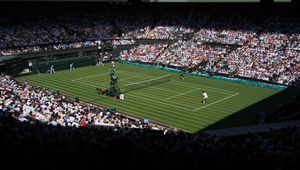
FIFA Club World Cup: What Happens When You Put The Fans Last?

Image credit: Martin Bennie via Unsplash
If you're wondering how to build a global sporting event and lose the room at the same time, FIFA's brand new Club World Cup might just be your case study.
On paper, it’s football’s next big step: a supersized, sparkly, multi-billion-dollar tournament to decide the best club in the world. On the pitch, it’s Germany’s six-time European Cup winners versus some amateurs from New Zealand. In the stands, it’s 50,000 empty seats.
Let’s not be naïve. Money fuels football. It always has. But when you design a tournament where ticket prices defy gravity, you create brand new transfer windows between stages, player welfare is an afterthought, and fans are treated like a prop department for the TV cameras, it’s fair to ask: who exactly is this for?
Big stadiums, small crowds
Let’s start with the basics. Eight of the twelve tournament venues boast 65,000+ seats. Games featuring teams most Americans haven’t heard of are being played in stadiums designed for the Super Bowl. Some have sold fewer than 10,000 tickets. The result? Empty sections being strategically disguised on TV, while fans are shuffled around like chess pieces to hide the reality.
That’s not fanfare. That’s a farce.
Instead of building an experience with supporters, they’ve tried to manufacture hype at industrial scale. But football (and many sports like it) is about community. One with emotions, rituals, rivalries and dreams.
"Compete" means to strive together
Here’s a word we should all remember: compete. From the Latin competere, meaning “to strive together.” That’s the essence of any sporting drama. But when Bayern Munich are racking up double-digit scorelines against part-timers from Auckland, we’re not watching competition - we’re watching a mismatch.
No one wants to see a footballing Harlem Globetrotters routine. We want jeopardy. We want grit. We want Fluminense vs Mamelodi Sundowns because it matters, not because it's been scheduled at the Hard Rock Stadium to satisfy a sponsorship contract.
You can’t fake fandom
At Trouble Maker, we talk a lot about how to build real fandoms - not just rent them for 90 minutes. Our 2025 Fan Engagement Masterclass boils it down to three steps. FIFA would have done well to follow them:
Step 1: Establish a fan role
Just inserting yourself into a fanbase is not fan engagement. At best, you’ll be added to the wallpaper.
Ask yourself:
- What do the fans care about?
- What do they not have?
- What can you credibly deliver?
With this tournament, fans clearly wanted competitive fixtures, affordable tickets, and player welfare taken seriously. What they got instead was heatstroke football on weekday afternoons in NFL venues and a qualification process that left out actual champions of Spain, England and Italy.
Compare this to the success of Baller League, originated in Germany in 2024 before expanding to the UK in 2025 and it’s night and day. A fan-first concept that’s reinvented football as a spectacle in a new media age - capturing the attention of a young, digital-first audience and bringing a whole new generation of spectators into the beautiful game.
Step 2: Activate and elevate their voices
Fans are less passive than ever. They want to shout. And they want to be heard.
According to a 2023 fan report by Amazon, Twitch and Brand DNA, 63% of fans said any brand can get involved with their sport - if they make an effort to understand it. But you don’t show understanding by charging $349 for a group stage ticket in a tournament no one understands. And then desperately reducing the prices to $20 for students to get bums on seats. Or by hyping said tournament with influencers who can catch things in their mouth on Instagram instead of engaging supporters’ groups, ultra communities, or the heartbeat of the game: the locals.
Step 3: Give them the role you identified
When we helped launch the Ferrari and Peroni F1 partnership, we didn’t just plonk the brand on a logo and hope for engagement. We identified how fans spent the off-season - gossiping, predicting, decoding. So we fed that behaviour into our content designed for them to share, argue about, and obsess over.
The result? The most talked-about F1 partnership of that period, with hundreds of millions of impressions driven by fans themselves.
But this can be achieved by big sports properties as well. Take the success of The Hundred in UK cricket - new audiences, new formats, proper fan-first design. Over 50% of ticket buyers were new to English cricket. Not a botched last-minute push via influencer giveaways, but a genuine effort to grow something from the ground up.
When the players are suing you…
Let’s not forget - the players are suing FIFA. That’s how exhausted and over-scheduled they feel. FIFPro, the players’ union, has said enough is enough. And honestly, if your star players are limping in after a 60-game season, and your seats are filled by college students on promo tickets - maybe it’s time to ask: is anyone actually enjoying this?
This isn’t about nostalgia or clinging to tradition. It’s about respect. Respect for the players. Respect for the calendar. But most of all, respect for the fans - the lifeblood of the game.
Because if you’re going to talk about legacy, growth and global opportunity, you better make sure you’re building something people want to be a part of - not something they have to be bribed into watching. This tournament has a long time left to run, and it’s likely the legacy may get bailed out by a late-tournament coalescence of the bigger clubs and some highlight moments the beautiful game tends to give us (England fans know that a last minute Bellingham overhead kick can paper over many a crack) but lessons in fan engagement should be heeded ahead of the next iteration of this tournament in four years.
How to put fans first, not last
When you put fans last, don’t be surprised if they don’t show up. Fandom isn’t a tap you turn on when the cameras roll - it’s earned. By great strategy, insights and understanding. Gesture by gesture. Story by story.
At Trouble Maker, we’ve designed fan-first experiences for Peroni, Asahi, Man City, OPPO, Everlast, Sports Direct and many more. If you want us to run you through the 2025 Fan Engagement Masterclass, feel free to reach out.















